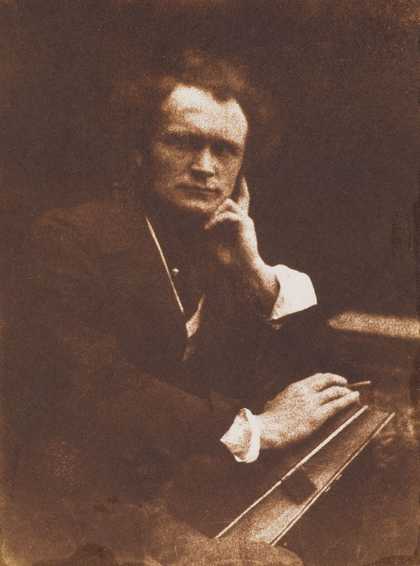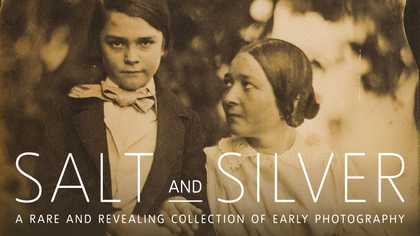Since its inception in the mid-nineteenth century, photography has been in an almost constant state of flux. The relentless technological innovation of the twentieth century has propelled photography through a series of transformations that have significantly reshaped the field. Of these many changes, that which has taken place in recent years is arguably the most profound of the mediumŌĆÖs history; Photography has now become an overwhelmingly digital pursuit, not only in terms of the devices which are used to take photographs, but also in the digital form of photographic images and the way they are distributed online. At the time this article was being written, over 30 billion photos had been shared on Instagram and approximately 300 million photographs are uploaded to Facebook each day. The Internet has become photographyŌĆÖs preferred, if not only playing┬Āfield.
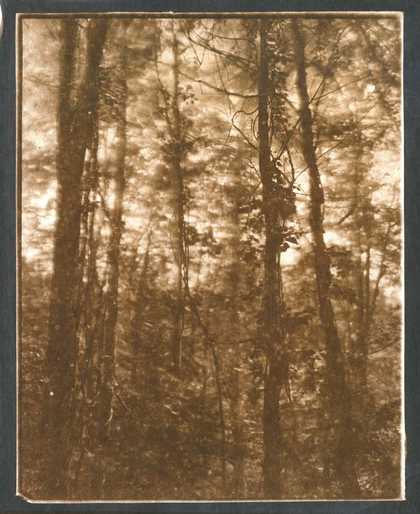
Koichiro Kurita, ŌĆŗThe Window SideŌĆŗ,┬ĀMontville, MEŌĆŗ, ŌĆŗ2013┬Ā ┬Ā ┬Ā
8x10" salt print from Talbottype┬Ānegative┬Ā
ŌĆŗCourtesy of the artist and sepiaEYEŌĆŗ
Despite, or perhaps because of this, some photographers are bucking the trend by going back to the beginnings of the medium. In recent years, a shift toward early photographic techniques has occurred. These techniques are often labeled as ŌĆśalternativeŌĆÖ photographic processes, with many focusing on the processes developed by William Henry Fox Talbot, notably the calotype and the salted paper print. While this community is largely made up of amateurs who focus on the mechanics of the process, for some contemporary artists, Fox TalbotŌĆÖs legacy has informed not only their photographic practice, but also the philosophy and ideas behind their┬Āwork.
Born in Japan in 1943, Koichiro Kurita has been based in the United States since 1993. Though he began his career as a commercial photographer, he discovered his true photographic calling thanks to one of Fox TalbotŌĆÖs contemporaries: Henry David Thoreau. His encounter with ThoreauŌĆÖs book Walden led Kurita to turn his photographic practice towards nature. A master of the platinum palladium print, Kurita also makes use of the salted print in his practice. In the project, Kurita posed the question, ŌĆśWhat if Thoreau had been a photographer?ŌĆÖ using Fox TalbotŌĆÖs paper negative calotype process to produce salt or albumen┬Āprints.┬Ā
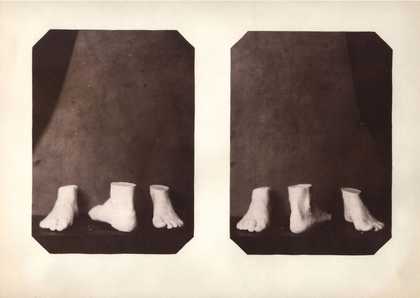
Dan Estabrook
Six Feet, 2010
Salt print, 14 x 11"
KuritaŌĆÖs printing work reflects a concern shared by those artists working with these early photographic processes: a need to work with their hands and a recognition of the importance of a photograph as an object. The American artist Dan Estabrook is one of the foremost users of the salted paper print process today. For Estabrook, ŌĆśEvery handmade photograph is like a drawing or painting, or even a sculpture. It is an object first and foremost, with weight and form, not just a window into another world or another┬Ātime.ŌĆÖ┬Ā┬Ā
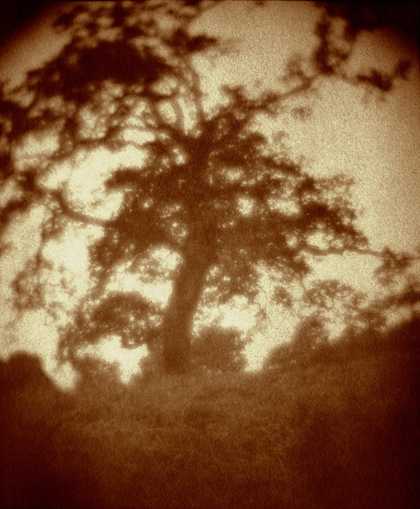
Mark Osterman & France Scully Osterman┬ĀWest Field Tree, 2010, from the┬ĀLight at Lacock╠²▓§▒░∙Š▒▒▓§
Digital pigment print from photogenic drawing negative
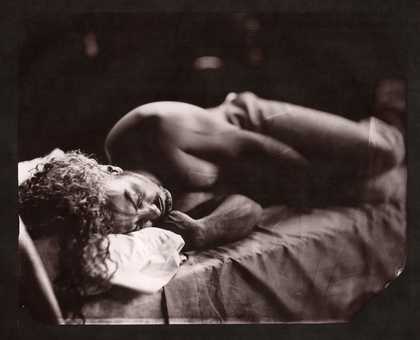
France Scully Osterman┬ĀPablo, 2002, from the┬ĀSleep╠²▓§▒░∙Š▒▒▓§
Waxed salt print from collodion negative
The husband and wife duo Mark Osterman and France Scully Osterman, have made use of Fox TalbotŌĆÖs early photogenic drawing technique as well as salt paper printing. For their collaboration The Light at Lacock they combined photogenic drawing with digital technology, scanning and inverting their negatives to produce prints. Reflecting upon the disappearance of the negative in the digital age, Scully notes that ŌĆ£new technology is both unsettling and full of promise. Digital photography doesnŌĆÖt require a negative and the positive pictures are printed in pigments, which are more permanent than silver based photography. ItŌĆÖs a substantial step forward in the evolution of images made with light and one might expect that the early inventors of photography would have loved it.ŌĆØ Their practice illustrates how digital techniques can be successfully combined with early processes in order to develop new photographic┬Āapproaches.
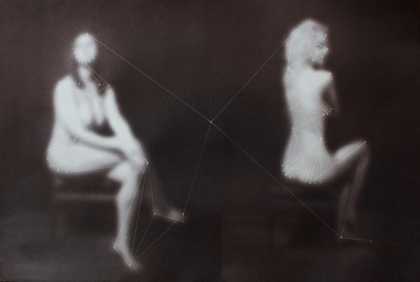
Danielle Ezzo
Two Women. Kindred Systems, 2012
Salted paper print, 20 x 16ŌĆ│
For some younger artists who belong to a generation of digital natives, the use of these early photographic techniques can be seen as a radical gesture. Born in 1984, Danielle Ezzo is an American photographer who has worked with many early photographic processes including cyanotypes, gum bichromate prints and salted paper prints. For her series , Ezzo combines salt prints with drawings, a recognition of the early link between the two disciplines and am homage of sorts to Fox TalbotŌĆÖs failed drawings with the camera lucida. As she explains: ŌĆśI try to find ways to insert my hand into whatever process IŌĆÖm working with. ItŌĆÖs especially interesting to me in conjunction with photography because you do not expect to see the artistŌĆÖs hand in such a direct way. By drawing directly onto the negatives, I was breaking the expectation of the role of both the artist and the┬Āphotograph.ŌĆÖ
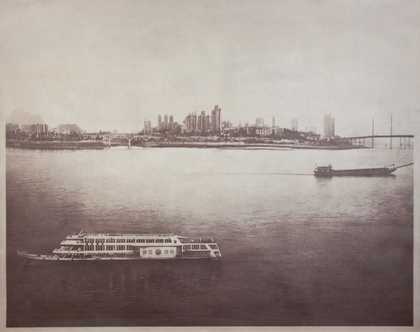
Matthew Brandt
Two Ships Passing, China, 2011
Salted paper print with Xianjiang River water
42 x 52 1/2"
Matthew Brandt (born in 1982) has used the salted paper print in order to connect the photograph to its subject in a very direct way. While experimenting with the process, Brandt realized that he could use the salt present in most materials. In , he used samples collected from the bodies of water he was photographing to soak his prints, thereby truly making his subject a part of the finished work. Brandt also experimented with this technique in his Portraits series, where the sitterŌĆÖs bodily fluids became an active part of the chemical┬Āprocess.┬Ā
Many of these artists experiment with early photographic techniques in an attempt to search for answers to photographyŌĆÖs current existential crisis. According to Estabrook, ŌĆśNow that we can clearly say that all the daily and vernacular uses of photography are digital - our snapshots, our vacation photos, our school pictures, our advertising, our pornography - then that means chemical photography is finally at the place that painting may have been when photography was invented: free to abandon its usefulness to concentrate on being art.ŌĆÖ Whether driven by nostalgia, a desire to explore photographic history, or simply by a thirst for the material in the age of the virtual, the salted paper print continues to thrive in the digital┬Āage.
Salt and Silver: Early Photography 1840 - 1860 runs until 7June 2015. Book tickets

